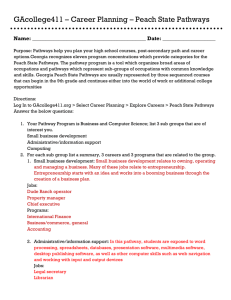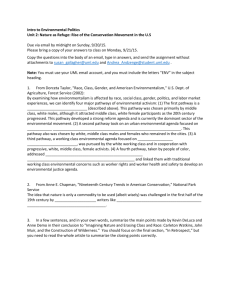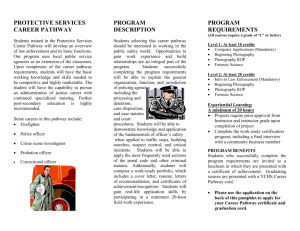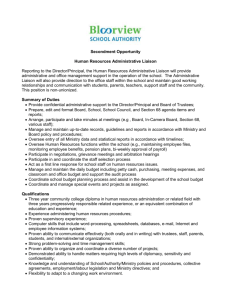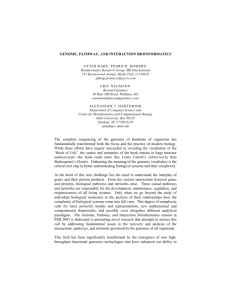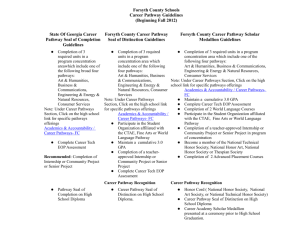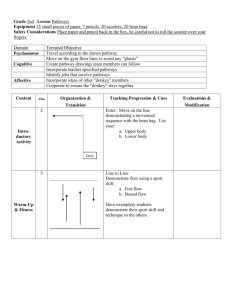Identification and Development of Individualized Access Pathways
advertisement
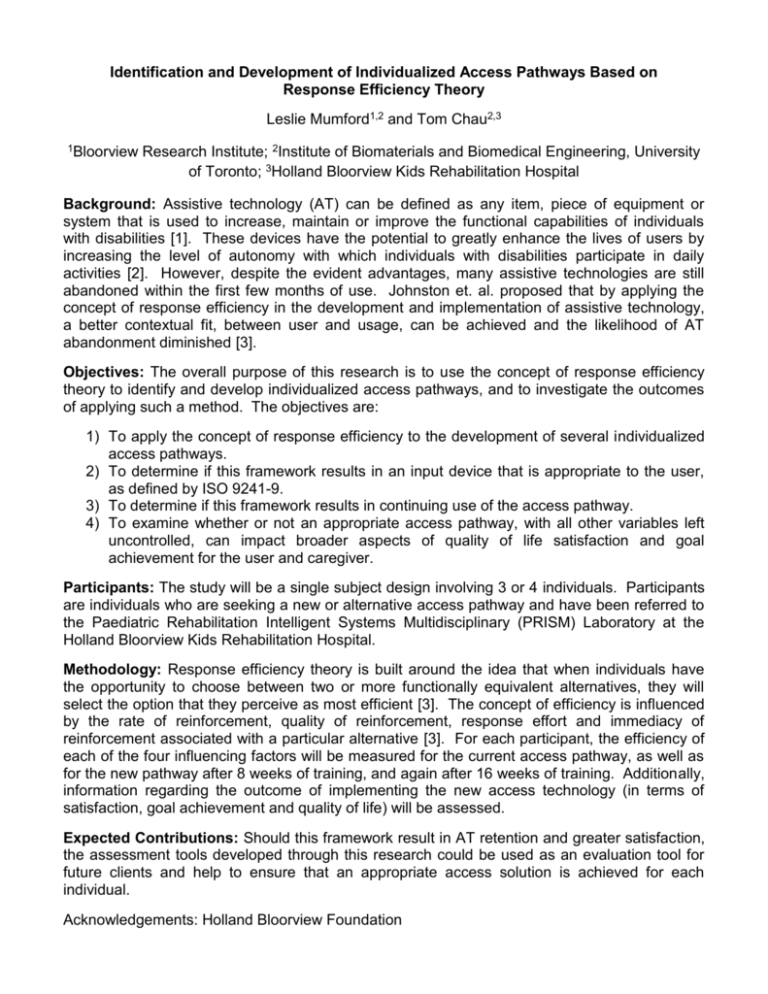
Identification and Development of Individualized Access Pathways Based on Response Efficiency Theory Leslie Mumford1,2 and Tom Chau2,3 1Bloorview Research Institute; 2Institute of Biomaterials and Biomedical Engineering, University of Toronto; 3Holland Bloorview Kids Rehabilitation Hospital Background: Assistive technology (AT) can be defined as any item, piece of equipment or system that is used to increase, maintain or improve the functional capabilities of individuals with disabilities [1]. These devices have the potential to greatly enhance the lives of users by increasing the level of autonomy with which individuals with disabilities participate in daily activities [2]. However, despite the evident advantages, many assistive technologies are still abandoned within the first few months of use. Johnston et. al. proposed that by applying the concept of response efficiency in the development and implementation of assistive technology, a better contextual fit, between user and usage, can be achieved and the likelihood of AT abandonment diminished [3]. Objectives: The overall purpose of this research is to use the concept of response efficiency theory to identify and develop individualized access pathways, and to investigate the outcomes of applying such a method. The objectives are: 1) To apply the concept of response efficiency to the development of several individualized access pathways. 2) To determine if this framework results in an input device that is appropriate to the user, as defined by ISO 9241-9. 3) To determine if this framework results in continuing use of the access pathway. 4) To examine whether or not an appropriate access pathway, with all other variables left uncontrolled, can impact broader aspects of quality of life satisfaction and goal achievement for the user and caregiver. Participants: The study will be a single subject design involving 3 or 4 individuals. Participants are individuals who are seeking a new or alternative access pathway and have been referred to the Paediatric Rehabilitation Intelligent Systems Multidisciplinary (PRISM) Laboratory at the Holland Bloorview Kids Rehabilitation Hospital. Methodology: Response efficiency theory is built around the idea that when individuals have the opportunity to choose between two or more functionally equivalent alternatives, they will select the option that they perceive as most efficient [3]. The concept of efficiency is influenced by the rate of reinforcement, quality of reinforcement, response effort and immediacy of reinforcement associated with a particular alternative [3]. For each participant, the efficiency of each of the four influencing factors will be measured for the current access pathway, as well as for the new pathway after 8 weeks of training, and again after 16 weeks of training. Additionally, information regarding the outcome of implementing the new access technology (in terms of satisfaction, goal achievement and quality of life) will be assessed. Expected Contributions: Should this framework result in AT retention and greater satisfaction, the assessment tools developed through this research could be used as an evaluation tool for future clients and help to ensure that an appropriate access solution is achieved for each individual. Acknowledgements: Holland Bloorview Foundation




